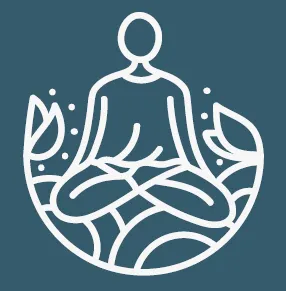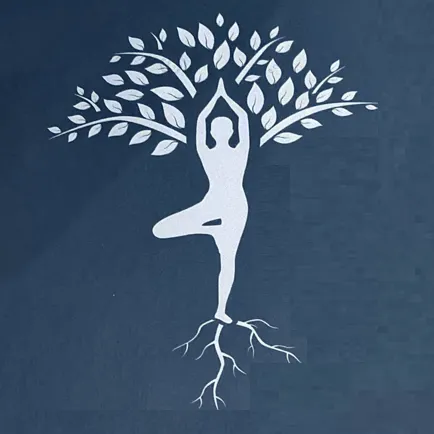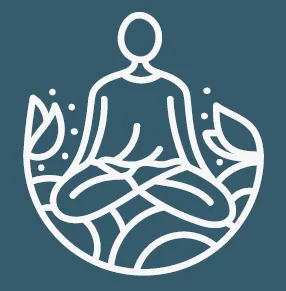Blogs
Written by Elke Hottentot

Yoga & Asthma
Yoga & asthma
One of my students suffers from asthma since her teens and to date, there is no known cause, which in the medical world is referred to as asthma sine material.
Asthma affects a great number of people, with one source indicating that 8 – 10% of the French population suffers from this condition.[1] The student that I am writing about is from Sri Lanka, aged 32 and has been living in Switzerland for one year. She has suffered from asthma since her teens, and at the time of joining the yoga classes was experiencing an increase in symptoms. I never saw her suffering from an asthma crisis, but in case such would happen, I had request for her to bring the Ventolin pump that her doctor had prescribed to the classes. As she joined my classes during the first weeks of spring and as Geneva was experiencing unprecedented high levels of pollen, I asked her whether she was allergic to pollen. She did not know, and I recommended her to see an allergist. Being relatively new to Geneva, I gave her the name and phone number of an allergist.
“Asthma is characterized by coughing, wheezing, and inflamed airways. Asthmatics always have some degree of inflammation, but experience increased swelling, mucus production, coughing, and a tightening of the smooth muscle around the airways during an attack or flare up.” [2] This leads to a constriction of the bronchial tubes (bronchi)[3], because of which breathing becomes shallow, fast, and difficult.[4]
The typical characteristic of someone suffering from asthma is inversion of the respiratory rhythm, with the inspiration becoming two to three times as long as the expiration.[5] Asthmatics thus chronically over-breathe. As described in great detail in part II of this memoire, this over-stimulates the sympathetic nervous system, which in and of itself perpetuates the cycle of stress, anxiety and shallow breathing. At the same time, it deprives “the body of oxygen and prana essential to good health.”[6] From this should be clear that learning to breathe properly, although beneficial for every human being, is essential for those with asthma.[7]
My student fit the typical bill of an asthmatic, in the sense that she had a relatively long inhale and a very short exhale. Her thorax had already taken on the form of someone perpetually stuck in an inhale, meaning hyper-extended with an increased anterio-posterior diameter and a reduced respiratory excursion of the chest wall – also referred to as a barrel chest.[8] It is said that asthmatics do not know how to breathe, meaning that s/he is not aware of the mechanics of his or her own breathing, particularly not off the essential role of the diaphragm.[9] The fact that this student participated in my yogic-breath centred yoga classes turned out well, as these happened to be – for the most part – perfectly suited to her needs. She presented with a paradoxical breath and did not know how to inhale other than by raising her upper chest.
The classes in which she participated included exercises to “find the breath”[10]; to make the unconscious act of breathing, conscious. An entire session was dedicated to lengthening the exhale, raising students’ awareness of the fact that they can indeed control the length of the exhale. This was particularly revolutionary for the student in question. Once the breath is found, exercises were introduced to increase understanding and awareness of the fact that a proper inhale begins with a belly that inflates, followed by the ribs that expand and then last, a slight rising of the upper chest. Postural work included paschimottanasana and uttanasana, known to relax the diaphragm and the inter-costal muscles, thereby allowing for a lengthening of the exhale.[11] These classes also incorporated exercises to increase students’ sense of air filling one side of the thorax to a greater extent, such as is the case in trikonasana. We also practiced other exercises that are beneficial for asthmatics, including eka pada apanasana, apanasana and dvi pada pitham, as well as torsion of the spine by rolling bend legs to one side, while turning the head to the other. These exercises all demand a mastering of the exhalation[12]; a vital ability on the road of recovery for asthmatics. Shavanasa was practiced regularly during these classes, and emphasis was put on surrendering to one’s mat, relaxing the entire body through progressive relaxation techniques such as Jacobson and to finding true immobility.
Adaptations were necessary there where the classes incorporated exercises that lengthened the inhale or involve breath-retention at the end of the inhale. Instead, I told her to continue practicing those exercises that lengthen the exhale and experiment with a light retention at the end of the exhale, which we had practiced in the previous classes.
At the end of the class, I often took 10 to 15 minutes with this student to ensure she was grasping the essence of the teachings, and to give her some more specific instructions where needed. Generally, this was done with the student lying on her back. I showed her how to feel breath move into the various parts of the chest and its expansion in response by encouraging her to place her fingers first on her belly, then on her ribs and last, upper chest. Given more time, we would have also practiced these types of awareness raising exercises in seated and standing position. And, we would have done more breathing exercises to lengthen the exhale, starting with the aim to make in – and exhale of equal length, then gradually lengthening the exhale and adding in retention at the end of the exhale once the student was comfortable.
It takes dedicated practice to increase consciousness of our breathing. It takes even more practice to increase it to such a degree that one can reverse a dysfunctional breathing pattern, and even more so for a pattern that is reinforced by a respiratory disease such as asthma. Understanding the vital importance of re-establishing a healthy breathing pattern, in no small part to ensure a healthy functioning autonomic balance, I encouraged my student to practice the exercises at home with great regularity.
Even in the short time I worked with this particular student, it became very clear that the practice of yoga can greatly relieve the symptoms of asthma, primarily by means of de-programming unhealthy breathing habits and re-learning a normal respiratory pattern; lengthening the exhale and general relaxation which aids the process of breathing.[13]
[1] Moline, L., Daouk, M., Gillet, G., and Deduit, Y. (2004): L’Harmattan, Paris, Yoga et medicine: Manual pratique, p. 45.
[2] Yoga and asthma and pranayama (yoga breathing) for asthma relief. http://www.yogabound.com/yoga-asthma-pranayama-yoga-breathing-for-asthma-relief/, May 1 2012.
[3] Yoga for asthma and bronchitis. http://www.abc-of-yoga.com/yoga-and-health/yoga-for-asthma-and-bronchitis.asp, May 1 2012.
[4] Yoga and asthma and pranayama (yoga breathing) for asthma relief. http://www.yogabound.com/yoga-asthma-pranayama-yoga-breathing-for-asthma-relief/, May 1 2012.
[5] Moline, L., Daouk, M., Gillet, G., and Deduit, Y. (2004): L’Harmattan, Paris, Yoga et medicine: Manual pratique, p. 46.
[6] Yoga and asthma and pranayama (yoga breathing) for asthma relief. http://www.yogabound.com/yoga-asthma-pranayama-yoga-breathing-for-asthma-relief/, May 1 2012.
[7] Idem.
[8] No title. http://www.sh.lsuhsc.edu/fammed/OutpatientManual/Asthma.htm, May 2 2012.
[9] Moline, L., Daouk, M., Gillet, G., and Deduit, Y. (2004): L’Harmattan, Paris, Yoga et medicine: Manual pratique, p. 50.
[10] Yoga and asthma and pranayama (yoga breathing) for asthma relief. http://www.yogabound.com/yoga-asthma-pranayama-yoga-breathing-for-asthma-relief/, May 1 2012.
[11] Moline, L., Daouk, M., Gillet, G., and Deduit, Y. (2004): L’Harmattan, Paris, Yoga et medicine: Manual pratique, p. 51.
[12] Idem, p.52.
[13] Yoga for asthma and bronchitis. http://www.abc-of-yoga.com/yoga-and-health/yoga-for-asthma-and-bronchitis.asp, May 1 2012.[1] Moline, L., Daouk, M., Gillet, G., and Deduit, Y. (2004): L’Harmattan, Paris, Yoga et medicine: Manual pratique, p. 45
.






